For homeowners, ensuring the safety and efficiency of their home isn't just a matter of investment, it's a part of protecting the lives and memories built within those four walls. We understand the magnitude of your role as the steward of your home, and that's why we're here to guide you through our complete home inspection services – a testament to our commitment to your peace of mind.
But why are home inspections so crucial? Picture this for a moment: it’s a tranquil evening, you're taking a relaxing bath, and suddenly, there's a tremor of cold water cascading over you – the water heater gives out, unannounced, and when you least expect it. That's not just a glitch in your comfort, it is a warning, an alarm you wish had been tested sooner.
And so, this guide is not just an educational resource; it's a handbook on safeguarding what's dearest to you. From the electrical currents that power your home to the invisible threads that weave comfort into the very fabric of your domestic life, we leave no wire uninspected, no safety valve unchecked. After all, a home can only be as solid as the inspections that sustain it, and we pride ourselves in ensuring that solidity.
Electrical Panel Inspection
Your home's electrical panel is the beating heart of its utilities – supplying power to every outlet, bulb, and appliance. Our meticulous approach to electrical panel inspections ensures that your home's heartbeat remains steady and safe.
The Heart's Anatomy
We begin with a walk-through of the panel's environment, ensuring it is unobstructed and free from any external hazards. Dust, pests, and moisture – these are the silent assailants that can jeopardize the panel's function. We clear the debris that could be the first sign of trouble.
Critical Junctions
The nerve center's main actors are its circuit breakers and fuses. Through a methodical testing process, we look for wear or tear that could be a precursor to dangerous arcs or fires. If a breaker seems to be overworking, we will identify it and suggest corrective measures before it’s a detrimental concern.
The Power of Safety and Efficiency
An effective electrical panel is more than just a convenience; it's a promise of safety and power efficiency. Ensuring each component operates within safety norms and rectifying any anomalies shields your home from unforeseen electrical hazards and slashes inefficiencies that can inflate your power bills.
What's included in an Electrical Panel Inspection?
To ensure the utmost safety and efficiency of your home’s electrical system, our comprehensive inspection includes the following meticulously performed checks and evaluations:
Preliminary Checks
- Verify Accessibility and Clearance: We first make sure that the electrical panel is easily accessible, with proper clearance around it, ensuring there’s no obstruction for safe and straightforward inspection.
- Labeling: The panel must be properly labeled with a clear directory of all circuits, allowing for easy identification and operation.
- Assessment for Damage: We look for any signs of water damage, corrosion, or rust on the panel or its components, indicators of potential failures.
Physical Inspection
- Visual Examination: Our experts inspect the panel for any visible damage such as cracks or burns which might compromise safety.
- Security Check: We ensure all panel screws are in place and that the panel cover fits securely, preventing unauthorized access and ensuring durability.
- Pest and Debris Prevention: We check for missing knockouts or openings that should be sealed to prevent the entry of pests or debris, protecting the electrical system’s integrity.
Circuit Breakers and Fuses
- Compatibility and Sizing: We verify that the correct type and size of circuit breakers are used for their respective circuits, critical for preventing overloads.
- Overheating Signs: Any signs of overheating, such as discoloration or melting, are carefully assessed for immediate action.
- Performance Testing: GFCI and AFCI breakers are tested for proper operation, ensuring they meet safety standards to prevent electrical faults.
- Double-tapped Breakers: We ensure there are no double-tapped circuit breakers unless the panel design accommodates them, preventing potential malfunctions.
Wiring and Connections
- Inspection for Correct Sizing: Proper wire size and type for each circuit breaker are inspected to match the load requirements, preventing electrical overheating.
- Connection Check: We look for loose, corroded, or damaged wires and connections, ensuring all wires are properly secured and terminated for optimal safety.
Grounding and Bonding
- Code Compliance: The panel’s grounding and bonding are verified against local codes, checking the condition of the grounding electrode system and connections for total compliance.
Labeling and Documentation
- Circuit Identification: All circuit breakers are checked to be accurately and clearly labeled, facilitating easy management.
- Documentation: We verify that the panel's documentation is current with any changes or modifications, maintaining a complete record for reference.
Safety and Compliance
- Code Adherence: The inspection ensures that the panel complies with the National Electrical Code (NEC) and local building codes, verifying safety and legal standards.
Testing
- Operating Voltage Tests: Perform voltage tests to ensure proper operation and loading of circuits, crucial for electrical system health.
- Polarity and Grounding Tests: Testing for proper polarity and grounding on receptacles near the panel, ensuring safe and effective electricity use.
Final Review
- Installation Evaluation: Review the electrical panel installation for any deviations from original design or specifications, documenting any irregularities or potential safety hazards identified.
Recommendations and Corrections
- Actionable Insights: Provide clear, actionable recommendations for correcting any deficiencies found during the inspection.
- Repair Scheduling: Schedule any necessary repairs or upgrades with a licensed electrician, ensuring your home’s electrical system is not only compliant but also optimized for safety, efficiency, and longevity.
By adhering to this complete and thorough inspection checklist, we affirm our commitment to your safety and satisfaction, safeguarding the electrical heart of your home with unparalleled professionalism and care.
See our special offer for an electrical panel inspection at the end of the article.
Heating and Cooling System Inspection
Radiant warmth in the chilly winters and the soothing coolness in relentless summer – these are what HVAC systems offer until their machinery grinds to a halt. We don't wait for your home's climate control to send you signals of distress; we act proactively with our thorough HVAC inspections.
The Warmth Test
As the mercury drops, we scrutinize every element of your heating system. We check for carbon monoxide leaks, investigate burner malfunctions, and ensure the integrity of your furnace's heart – the heat exchanger – protecting your family from both the shivers and unseen health risks.
Cool, Consistent Comfort
Efficiency isn't a feature; it's the heart of every HVAC system. By inspecting your AC unit, we assess refrigerant levels, clean the coils, and ensure proper airflow, maintaining efficiency that doesn't just cool your home, but also keeps your energy bills from overheating.
What's included in a Furnace or Air Conditioner Inspection?
Ensuring the efficiency and safety of your heating and cooling systems is not just about comfort; it's about safeguarding your home and family. Our detailed inspections are designed to catch potential issues before they become problems, offering peace of mind and system longevity.
>Visual Inspection
- Exterior Check: Examine the furnace for rust, corrosion, or deterioration signs. Ensure adequate clearance around the furnace for ventilation.
Electrical Components
- Wiring and Connections: Inspect for damage or wear.
- Thermostat Test: Ensure proper operation and calibration.
Gas Connection and Exhaust
- Gas Line: Inspect for leaks or damage.
- Exhaust Flue: Check for blockages, leaks, or corrosion.
Air Filter
- Maintenance: Examine the air filter condition.
Burners and Heat Exchanger
- Burner Inspection: Assess for proper ignition and flame.
- Heat Exchanger Evaluation: Check for cracks or signs of wear.
Blower Motor and Fan
- Cleanliness: Check blower wheel for dirt or debris.
- Functionality: Verify proper blower operation.
Safety Controls
- Testing: Test safety controls and limit switches for proper operation.
Ventilation System
- System Check: Inspect for blockages or leaks.
AC Inspection Checklist
Visual Inspection
- Condenser Unit: Examine the exterior for damage or blockages. Ensure adequate clearance around the unit for airflow.
Electrical Components
- Wiring and Connections: Check for damage or corrosion.
- Thermostat Compatibility: Test for proper operation with the AC system.
Refrigerant Levels
- Leak Inspection: Verify refrigerant levels and check for leaks.
Coils
- Maintenance: Inspect the condenser and evaporator coils.
Air Filter
- Condition: Assess the air filter.
Drainage
- Drain Inspection: Check the condensate drain for clogs or leaks.
Blower Motor and Fan
- Lubrication: Lubricate the blower motor if required.
- Condition Check: Examine the condition of the blower fan and motor.
System Operation
- Functional Test: Start the system to verify proper operation.
- Cooling and Airflow Monitoring: Ensure consistent cooling and airflow.
Safety Controls
- Safety Test: Examine any safety controls or switches for proper functionality.
Our thorough inspection processes reflect our dedication to your comfort and safety. Ensuring your systems are functioning properly not just enhances their efficiency but also their longevity, offering you peace of mind and ensuring your environment is exactly as you desire: perfectly comfortable.
See our special offer for a furnace or AC inspection at the end of the article.
Water Heater Inspection
A water heater is often that silent sentinel, its value comprehended only in its absence. Our water heater inspections go beyond the customary, looking out for issues that can compromise your daily comfort and the structural integrity of your home.
An Underwater Eye
In the dark corners where water heaters reside, we shine a light, looking for signs of corrosion or leaks. If there's a weakness, we find it and act to prevent potential floods that could devastate your home’s foundation and your peace of mind.
The Efficiency Quotient
An efficient water heater is a power-saving warrior. Sediment build-up, faulty valves, and old insulation can turn it into an energy-hungry behemoth. Our inspections root out these issues, helping you save resources and ensuring your hot water supply is as stable and dependable as the foundations it rests upon.
What's Included in a Water Heater Inspection?
Ensuring the safety and efficiency of your water heater is paramount to us. Our comprehensive water heater inspection checklist ensures every component of your system is examined thoroughly for optimal performance. Here’s what our detailed inspection includes:
Visual Inspection
- Leak Detection: Check for signs of leaks or water pooling around the base of the water heater.
- Condition Assessment: Inspect the water heater for rust, corrosion, or any signs of deterioration.
Temperature and Pressure Relief Valve (T&P Valve)
- Operation Check: Verify the T&P valve is present to prevent excessive temperature or pressure build-up.
- Discharge Pipe: Inspect for leaks or blockages that could affect safety.
Heating System
- Gas Water Heaters: Inspect the burner, flame, and pilot light for proper function. The flame should be blue with yellow tips to indicate healthy combustion.
- Electric Water Heaters: Review the condition of the heating elements to ensure efficient operation using an electric meter.
Thermostat
- Temperature Settings: Verify the temperature setting on the thermostat, typically recommended to be around 120°F to prevent scalding and reduce energy use.
Water Lines
- Connection Inspection: Examine cold water inlet and hot water outlet connections for leaks or corrosion, ensuring there's no compromise in the water heater’s performance.
Our meticulous inspection process underlines our commitment to delivering peace of mind and efficiency to your household. We strive not only to identify current issues but also to anticipate potential future concerns, ensuring that your water heater remains a reliable source of comfort and convenience in your home.
Water Softener Inspection
The quality of your home's water is often overlooked – until the day your skin feels the brunt of hard water or your dishwasher leaves water spots on your glassware. Our water softener inspection ensures that an often unseen but vital component of your home is working at its best.
The Hardness Test
We begin by assessing the efficiency of your water softener – is it effectively softening your water, or are mineral deposits sneaking past its defenses? By conducting a thorough analysis, we can determine the softener's effectiveness and recommend or perform necessary adjustments with precision.
Soft Water in Your Home
A water softener isn't just about appliances that last longer; it's also about spot-free dishes to skin and hair treated kindly by the soft touch of each drop, our inspections aim to maintain your system’s ability to provide water in its purest form.
What's Included in a Water Softener Inspection?
Ensuring that your water softener system works optimally is crucial for maintaining the lifespan of your plumbing and the quality of your water. To achieve this, we adhere to a comprehensive inspection routine designed to detect any issues and ensure your system is configured for maximum efficiency. Here’s what our inspection encompasses:
Visual Inspection
- Leak Detection: Thoroughly check for any leaks or signs of salt bridge formation in the brine tank. These can significantly affect the system's performance.
Salt Level and Quality
- Maintenance Checks: Ensure there is adequate salt in the brine tank and that it’s the correct type for your system. We also break up any solidified salt (salt bridges).
Settings and Controls
- Optimization: Verify that all settings and controls are accurately adjusted according to your specific water usage and hardness level. It ensures the system operates effectively without wasting resources.
Backwash Cycle
- System Flush: Initiate a manual regeneration (backwash) cycle to verify operation, ensuring it runs smoothly.
Check for Salt Mushing
- Inspection for Blockages: Inspect for salt mushing at the bottom of the brine tank. This condition can block the intake system and affect the softening process.
Inspect Bypass Valve
- Functionality Check: Inspect the bypass valve to verify it is functioning correctly, allowing you to divert water away from the softener when necessary.
Our attention to detail during the water softener inspection process exemplifies our commitment to delivering you a service that stands on the pillars of professionalism, reliability, and customer focus. Ensuring your system operates at its best not only concerns the longevity and efficiency of your water softener but also reflects our dedication to enhancing your home’s water quality for your comfort and health.
Conclusion
Home inspections are not merely an item to check off your list; they are your first line of defense against unforeseen disasters and your guide to resource conservation. Our commitment to empowering homeowners with knowledge and foresight prefaces our every inspection.
And as a cherry on the top, we are extending a special offer this April – a chance for you to save on these vital services. Don’t wait until the sweltering heat of summer or the chills of winter arrive; claim this exclusive offer and secure your home's fortitude today.
- $40 for an Electrical Panel Inspection
- $40 for a Heating and Cooling Inspection
- $40 for a Water Heater and Softener Inspection
Offer Expires May 10, 2024
Your home's safety and efficiency stand on the edge of a choice – the choice to act now, to schedule an inspection. Contact us today for a comprehensive inspection that is more than a service; it’s a shield around your home.
About Cardinal Heating & Air Conditioning
Cardinal Heating & Air Conditioning provides reliable service at competitive prices for Southern Wisconsin residents. Call Cardinal Heating & Air Conditioning today to learn more about our services.
Contact Information:
Cardinal Heating & Air Conditioning
3361 Brooks Dr.
Sun Prairie, WI 53590
United States
Cardinal Heating & Air Conditioning Team
(608) 837-9367
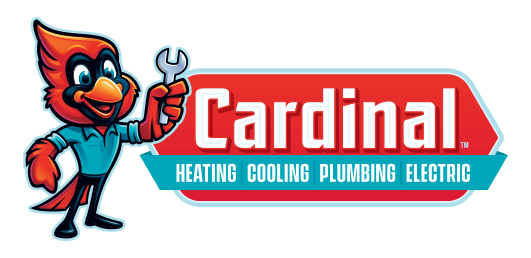
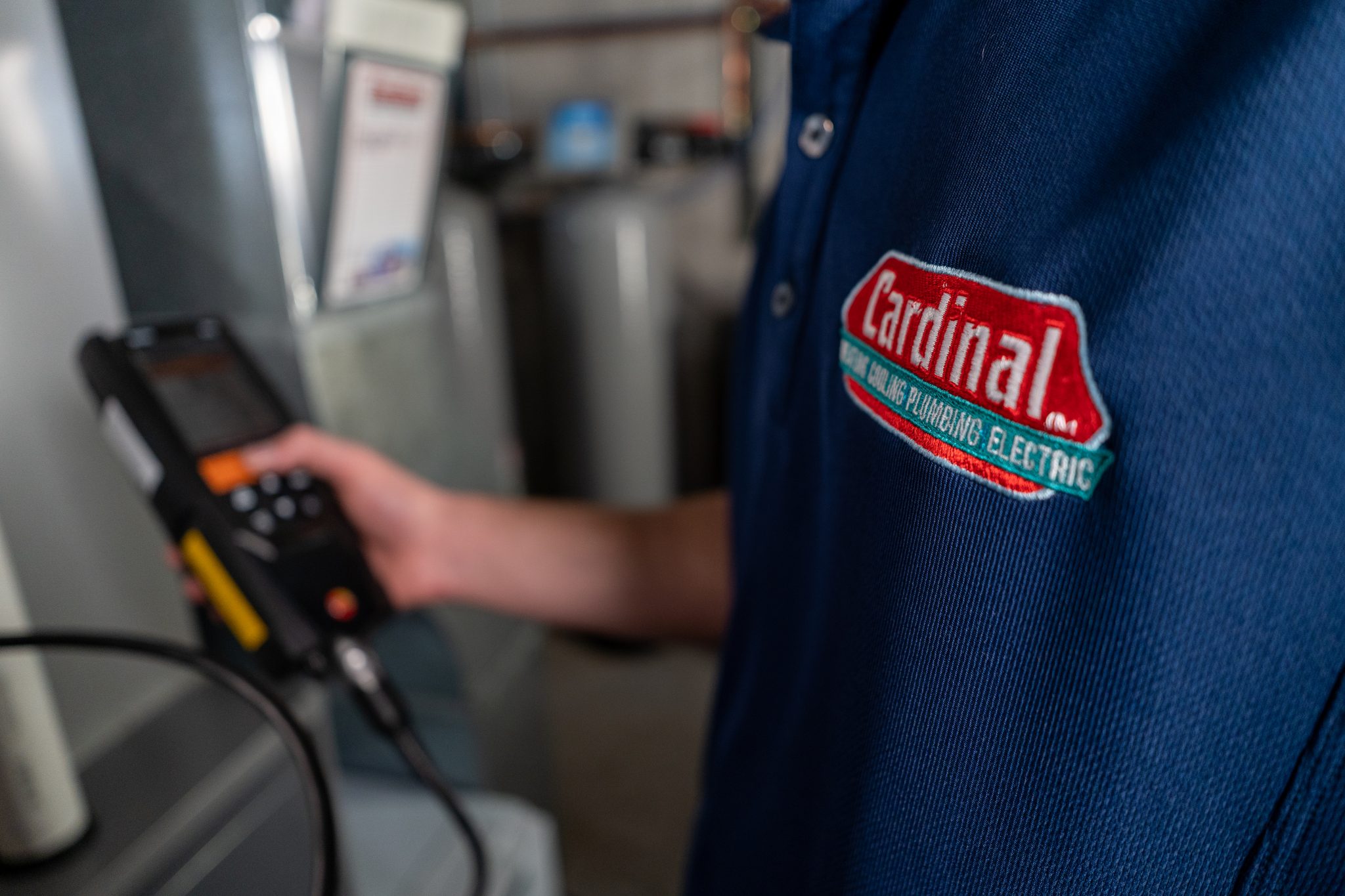


 When your home ecosystem is off balance, it’s not just discomfort you have to deal with - it hits your wallet and your health too. You might ask, just how significant can these impacts be? Consider this: according to the
When your home ecosystem is off balance, it’s not just discomfort you have to deal with - it hits your wallet and your health too. You might ask, just how significant can these impacts be? Consider this: according to the 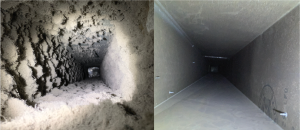
 For your air, consider scheduling professional maintenance for your heating and air conditioning system at least once a year. Why not set a reminder on your calendar right now? This can help catch minor issues before they become major headaches. Also, remember to change your air filters regularly – about every 3 months is ideal. And why not upgrade to smarter options like smart thermostats and air purifiers that automatically adjust to keep your indoor air quality at its best?
For your air, consider scheduling professional maintenance for your heating and air conditioning system at least once a year. Why not set a reminder on your calendar right now? This can help catch minor issues before they become major headaches. Also, remember to change your air filters regularly – about every 3 months is ideal. And why not upgrade to smarter options like smart thermostats and air purifiers that automatically adjust to keep your indoor air quality at its best?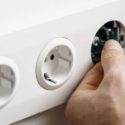
 Many people don’t know that the human body can actually conduct electricity. This is part of the reason that we can feel that “shock,” even with just the smallest contact with an electrical outlet.
Many people don’t know that the human body can actually conduct electricity. This is part of the reason that we can feel that “shock,” even with just the smallest contact with an electrical outlet. One of the most common injuries resulting from an electrical hazard is the electrical burn. Electrical burns occur when the electricity comes into direct contact with your skin.
One of the most common injuries resulting from an electrical hazard is the electrical burn. Electrical burns occur when the electricity comes into direct contact with your skin.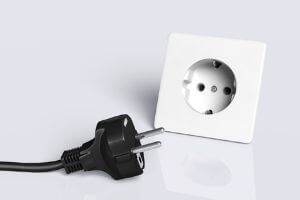 The easiest way to reduce or even stop electrical hazards from occurring in your home (other than hiring a professional instead of attempting to do it yourself) is by unplugging all non-essential appliances when they are not in use.
The easiest way to reduce or even stop electrical hazards from occurring in your home (other than hiring a professional instead of attempting to do it yourself) is by unplugging all non-essential appliances when they are not in use.